When it comes to mobile app growth, don’t expect to learn much from TikTok or Duolingo — their rules just don’t apply to most of us.
But what if you could learn from apps that are actually like yours? That’s exactly what I set out to do.
I collected and analyzed 753 funnels from 373 real-world mobile apps growing through paid traffic, fast iteration, and web-based monetization. With help from tools like SimilarWeb, AdHeart, and TrustPilot, I mapped out what works in mobile app growth funnels today.
Together with Olha Yohansen-Veselova, Growth and Product Advisor, I broke it all down in a webinar. This post highlights just some insights into mobile app growth — to get the full recording and slides, check the link at the end.
The market is booming, but not the way you think
The mobile subscription market just hit $69 billion. And it’s not slowing down — it’s growing at a 21.5% annual rate. For the first time ever, subscription-based apps are catching up with gaming apps in terms of revenue. Big deal? Yeah. Huge.
But it’s not just the Duolingos and YouTubes of the world driving that growth.
A whole wave of what we call “realistic” apps — the ones making less than $10M/month like Flo, Strava, Calm, Picsart, Chaton, Speak — are quietly growing just as fast. In fact, they’re seeing +27% compound annual growth.
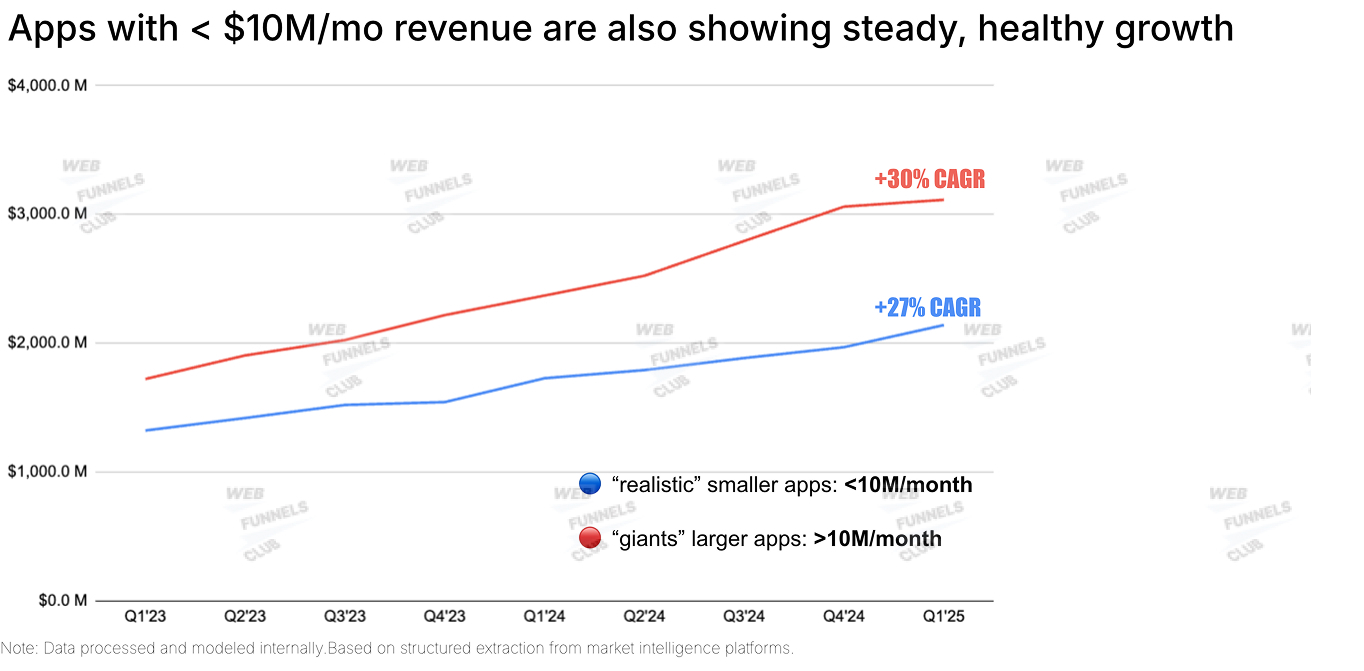
What’s their secret? There’s none: many of the most effective app growth strategies today are powered by web funnels.
Web funnels are the new standard in mobile app growth
Over the last 12 months, the number of brands using quiz-based funnels has jumped by +57%.
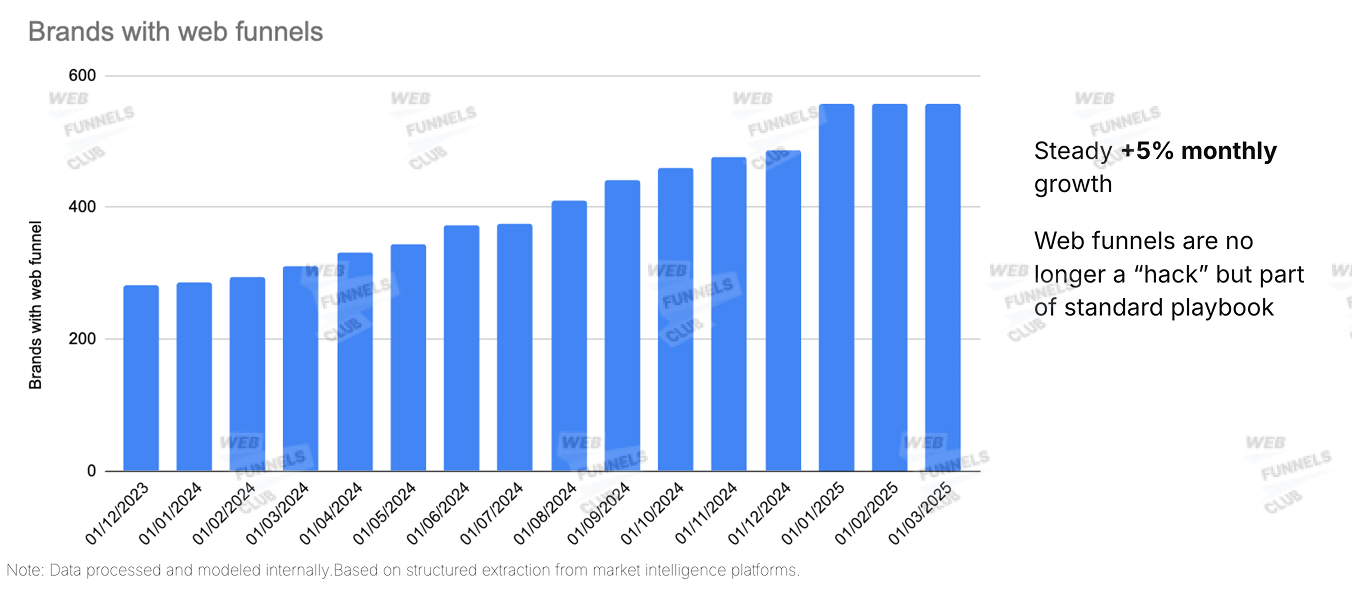
The total number of ad creatives doubled too, from around 78,000 to over 156,000. Look at the Q1 2025 chart for creative growth:
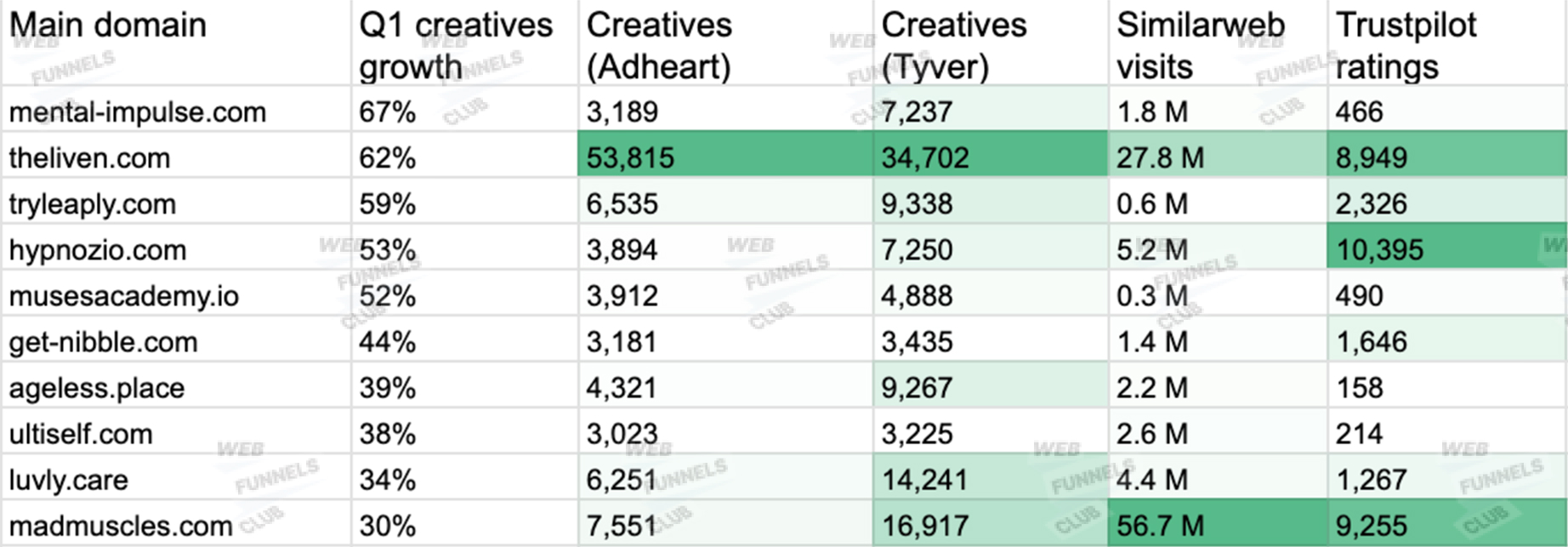
None of these apps are massive brands, but rather mid-size teams pushing big volumes of creatives every quarter. They constantly refresh angles and test new hooks. Liven alone launched over 53,000 ads last quarter, and MadMuscles put out nearly 17,000.
How app categories adopt web funnels
Top apps evolve from the direct-to-app approach ➝ web onboarding & in-app payment (web2app) ➝ both onboarding and payment happen on the web (web2web).
Education and Health & Fitness lead the pack with more mature web funnel setups — they’re using both web onboarding and web payment, skipping store fees and owning more conversion data. Other spaces — like Entertainment — are only now catching up with web onboarding and in-app payments.
If your category isn’t saturated with web funnels yet, that’s your edge.
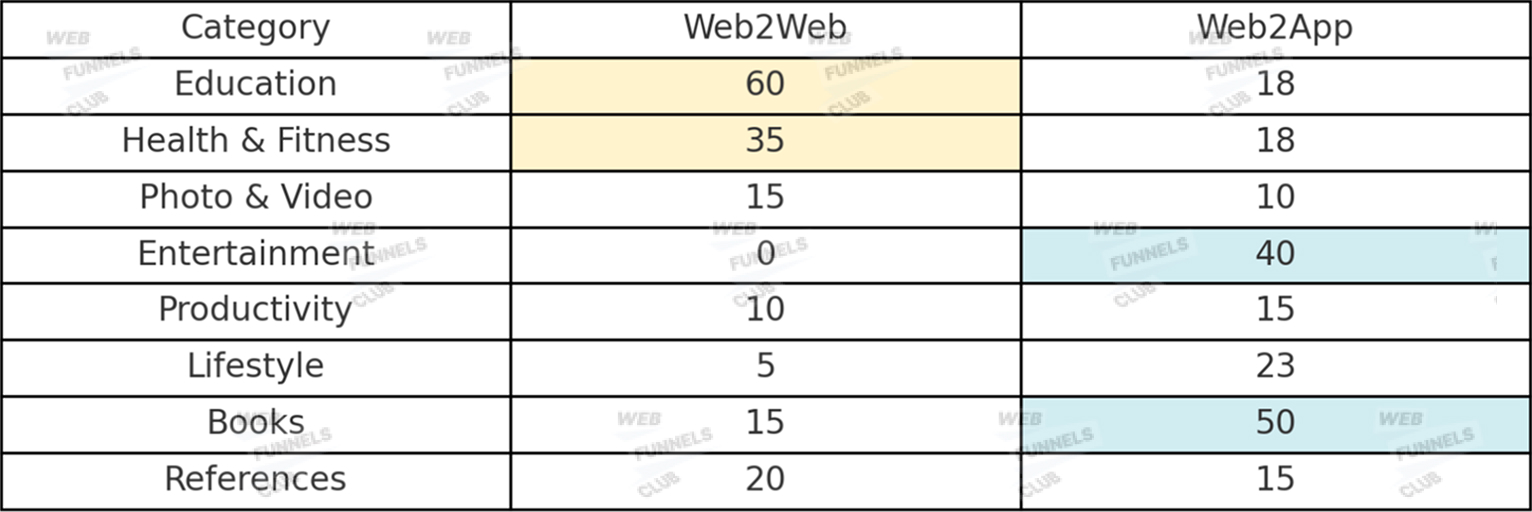
Health & Fitness is a perfect benchmark
Health & Fitness category was one of the first to bet on web funnels. Big names like MyFitnessPal, Flo, Strava, and Calm still lead with strong revenue and steady growth by tweaking funnels and adding segments to stay ahead.
But the real story is on the right: smaller teams are scaling fast by regularly launching fresh funnels, segmenting audiences by every job to be done, and jumping straight into web-first onboarding and payments.
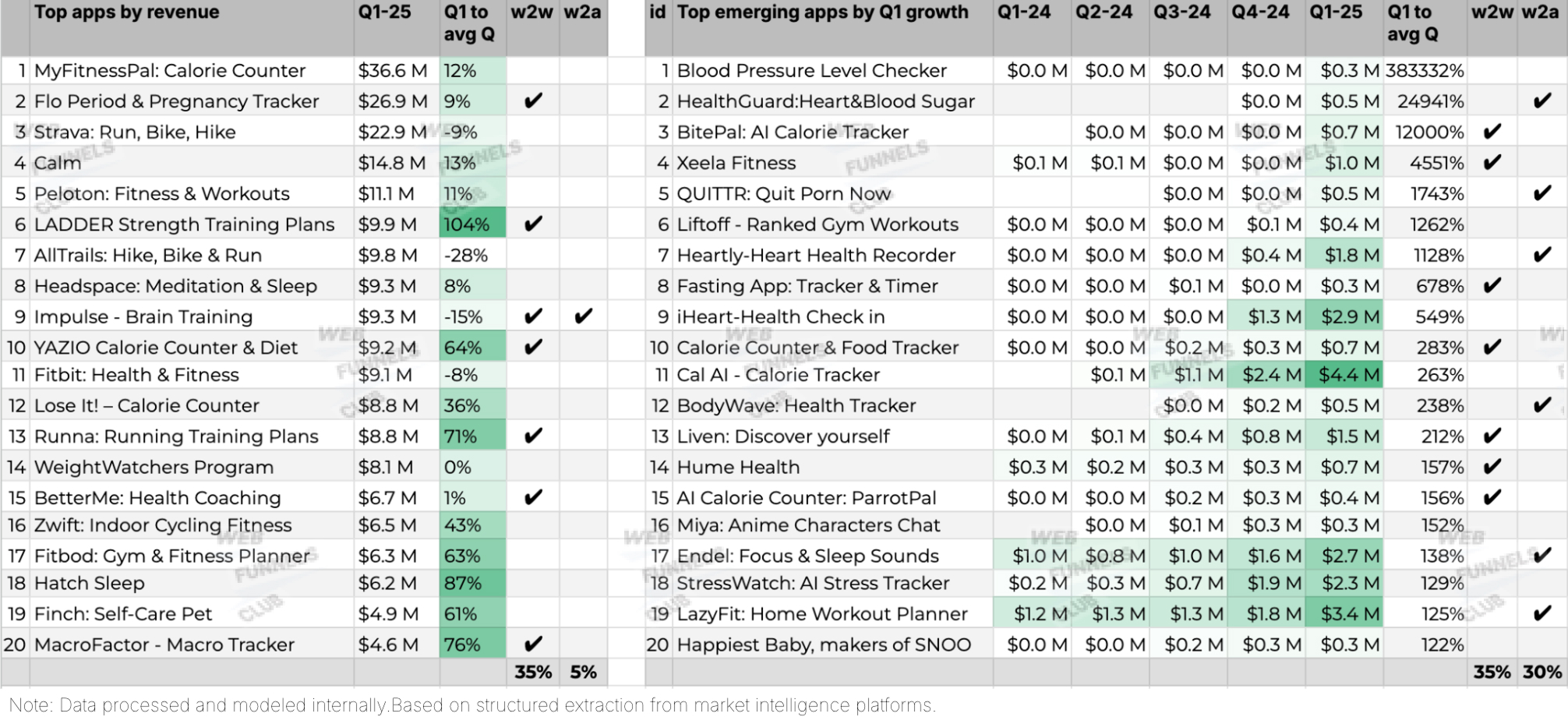
So, how do top apps make their web funnels work?
1. Launch multiple funnels
Top teams don’t stop at one funnel. They scale by building multiple funnels, each tailored to a specific audience segment or job to be done.
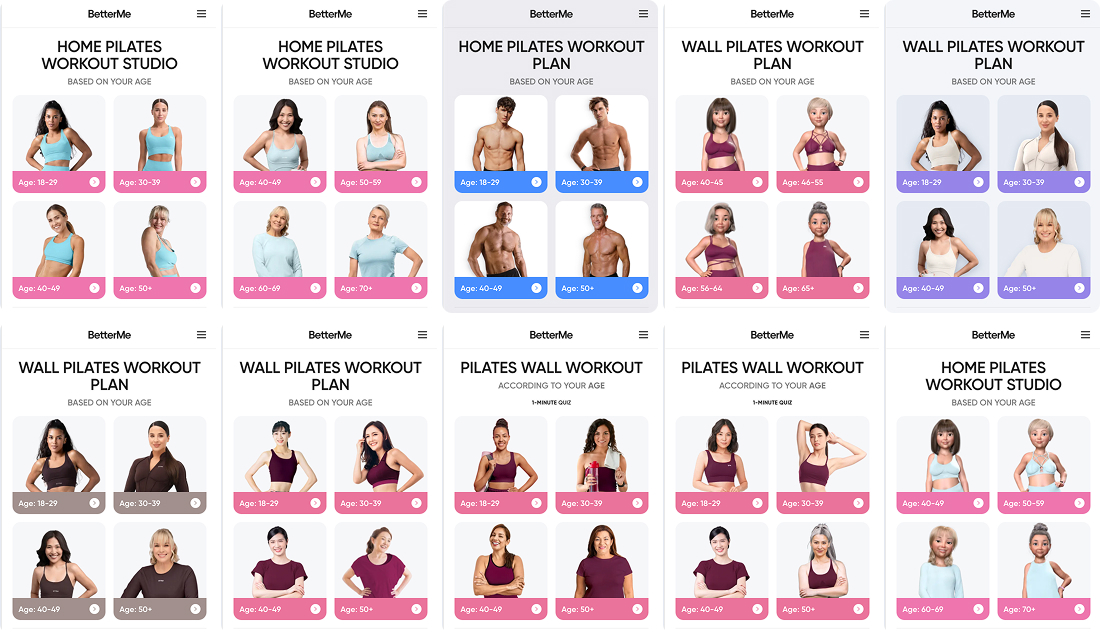
2. Let users experience the product, not just read about it
Winning funnels give a hands-on preview during web onboarding — like scanning your pulse through the camera, analyzing a selfie with AI, or customizing your learning journey before signup. Users see the magic before they pay.
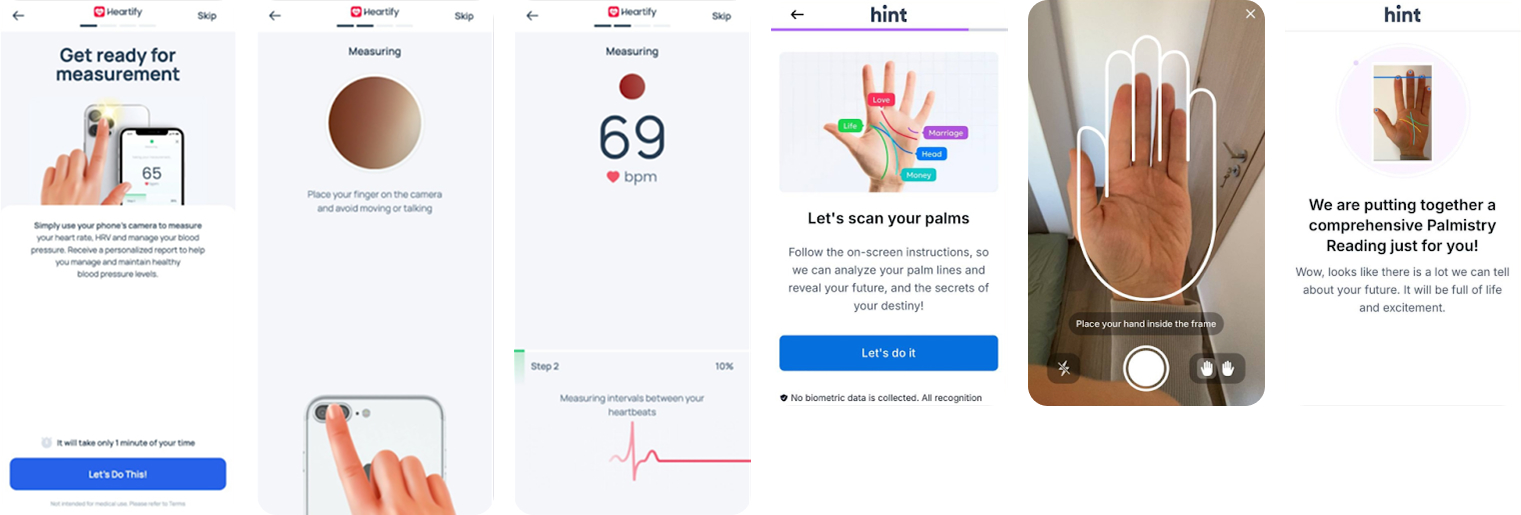
3. Use intro offers and three-option paywalls
Most high-performing funnels use a three-option paywall. It’s become the standard structure, and instead of offering a free trial, many teams go with a discounted first billing cycle, usually priced between $4 and $13.
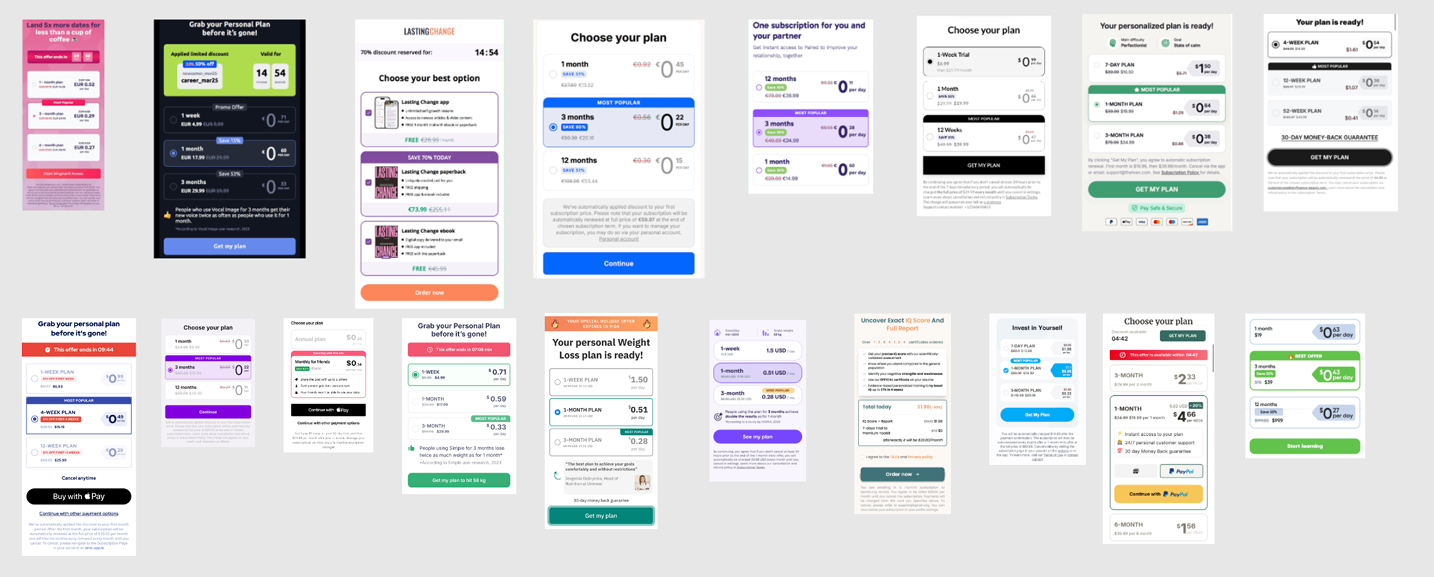
4. Stack revenue with smart upsells
High-LTV teams add post-checkout upsells — think add-ons, upgrades, premium content. These little screens often add 20–30% revenue with minimal extra effort.

5. Enable payments in WebView and use Apple Pay as the default method
Apple Pay is now the go-to method for one-click payments, even inside WebView, where it didn’t work before. That shift alone boosted conversion for many apps using web funnels and gave teams much more flexibility in how they build funnels. That’s why we’re seeing more flows where both onboarding and payment happen fully on the web.
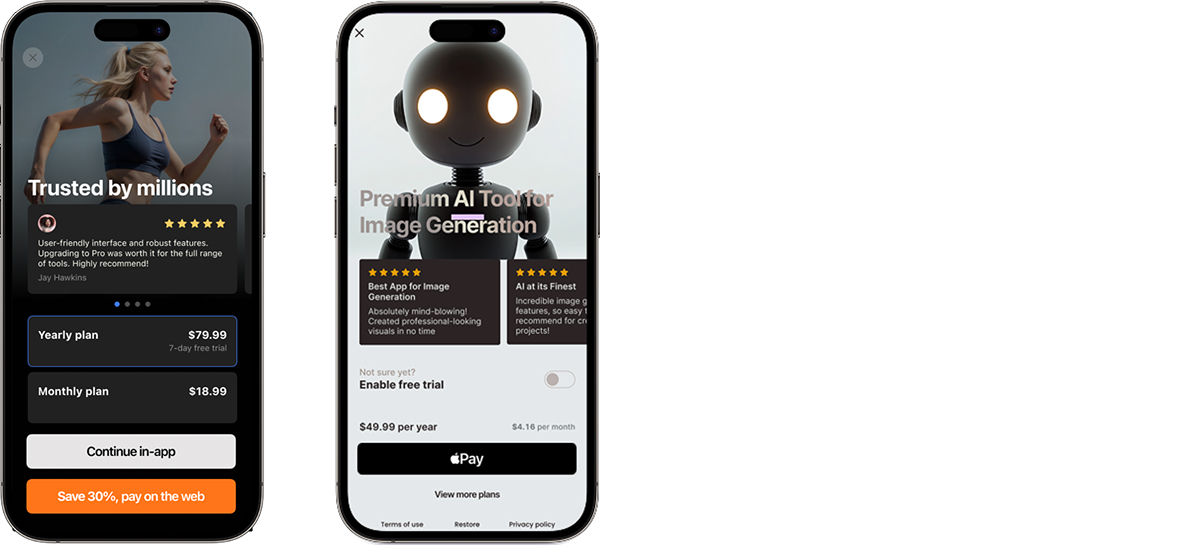
Where is mobile app growth heading next?
New categories are breaking out
Some of the fastest-growing app categories in 2025 are religion, ADHD, AI-powered tools, and short-form dramas. It may sound niche, but that’s where the early movers are getting market share before everyone else catches on. These categories weren’t even on the radar a couple of years ago, and now they’re exploding.
Web and in-app payments are starting to blend
The other big shift is that in-app and web payments are finally starting to play nice. With Apple loosening its grip (a bit), more apps are exploring hybrid monetization models using the web funnel for attribution and onboarding, and converting later in-app (or vice versa).
First to move payments to the web wins
If your category is still relying on App Store flows, switching to web payments early gives you a real edge. You get more control over pricing and payments, better conversion visibility, and faster learning cycles. That’s often enough to outpace others.
Want the full picture?
This post barely scratches the surface. In the webinar, we break down:
- How different app categories use web funnels (and why)
- What creative strategies top apps use to scale
- Real examples of funnels that quietly outperform app-store-only flows
- Tools, tactics, and benchmarks from 373 fast-growing apps









